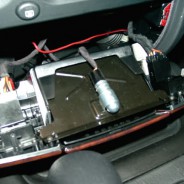An Introductory Guide To Upgrading Your WJ’s Interior Lighting To LED

An Introductory Guide To Upgrading Your WJ’s Interior Lighting To LED
Jan 18
Why upgrade to LED you say?
LEDs have several advantages over conventional incandescent lamps. For one thing, they don’t have a filament that will burn out, so they last much longer.
The main advantage is efficiency. In conventional incandescent bulbs, the light-production process involves generating a lot of heat (the filament must be warmed). This is completely wasted energy, unless you’re using the lamp as a heater, because a huge portion of the available electricity isn’t going toward producing visible light. LEDs generate very little heat, relatively speaking. A much higher percentage of the electrical power is going directly to generating light, which cuts down on the electricity demands considerably. You’ll never have to worry about leaving your interior lights on over night and running out your battery as they use 1/10 of the amount of electricity as incandescents.
Per-watt, LEDs output more lumens of light than regular incandescent bulbs. Light emitting diodes have a higher luminous efficacy (how efficiently electricity is converted to visible light) than incandescents.

You’ve completely igoenrd CRI, Color Rendition Index, which indicates how accurately the light shows the color of objects. Incandescent, halogen, and xenon are all about 100%, LEDs are next but usually produce too little general light at high purchase cost. The best CFLs are 82% and the best common florescents 84% specialized full-spectrum bulbs can be better, cost more, produce less light per Watt, and often only come in more blue, higher Kelvin numbers.LEDs are best used where you might now have a reflector type hologen or incandescent spot light, say a reading light in a place where changing burnt-out bulbs is difficult. LEDs are very directional.Worse CRI continues to be a problem, but the flicker objection to florescents was overcome years ago with electronic ballasts replacing old, less efficient, 60Hz line frequency magnetic ones. Flicker had been worse in homes than at work as most commercial fixtures had more bulbs and multiple magnetic ballasts that could be alternated to produce less noticeable 120Hz flicker.Personally, I use CFL’s for general lighting and Xenon or halogen for as-needed task lighting (reading, under sink, over stove). Its a good balance of cost and quality.